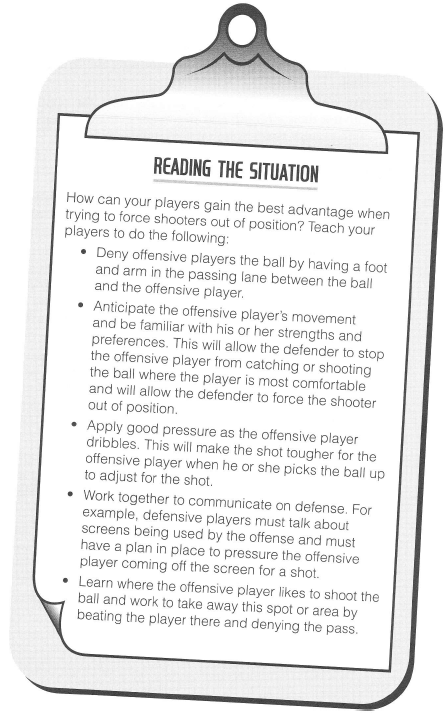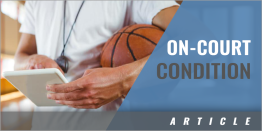|
Forcing Shooters Out of Position
A team's defensive strategy should focus on not allowing shooters to catch the ball in a position where they can make a good shot attempt. If the defense can successfully prevent the offensive players from taking good shots by forcing them out of position, this will go a long way toward increasing the defensive team's chances for a victory. A good defender will make sure that the offensive player never gets to his or her "spot" for the shot and will force the player to take a shot from a different angle or position. If the defender knows that an offensive player is a good baseline shooter, then the defender should try to keep that player off the baseline for the shot. When playing against an opponent with good shooters, the defensive team should always be aware of where the shooters are located on the court and should try to force the shooters out of their "comfort" position for the shot. WATCH OUT!
ACQUIRING THE APPROPRIATE KNOWLEDGE Rules
Strengths and Weaknesses of Opponents
Decision-Making Guidelines
|
|
|








